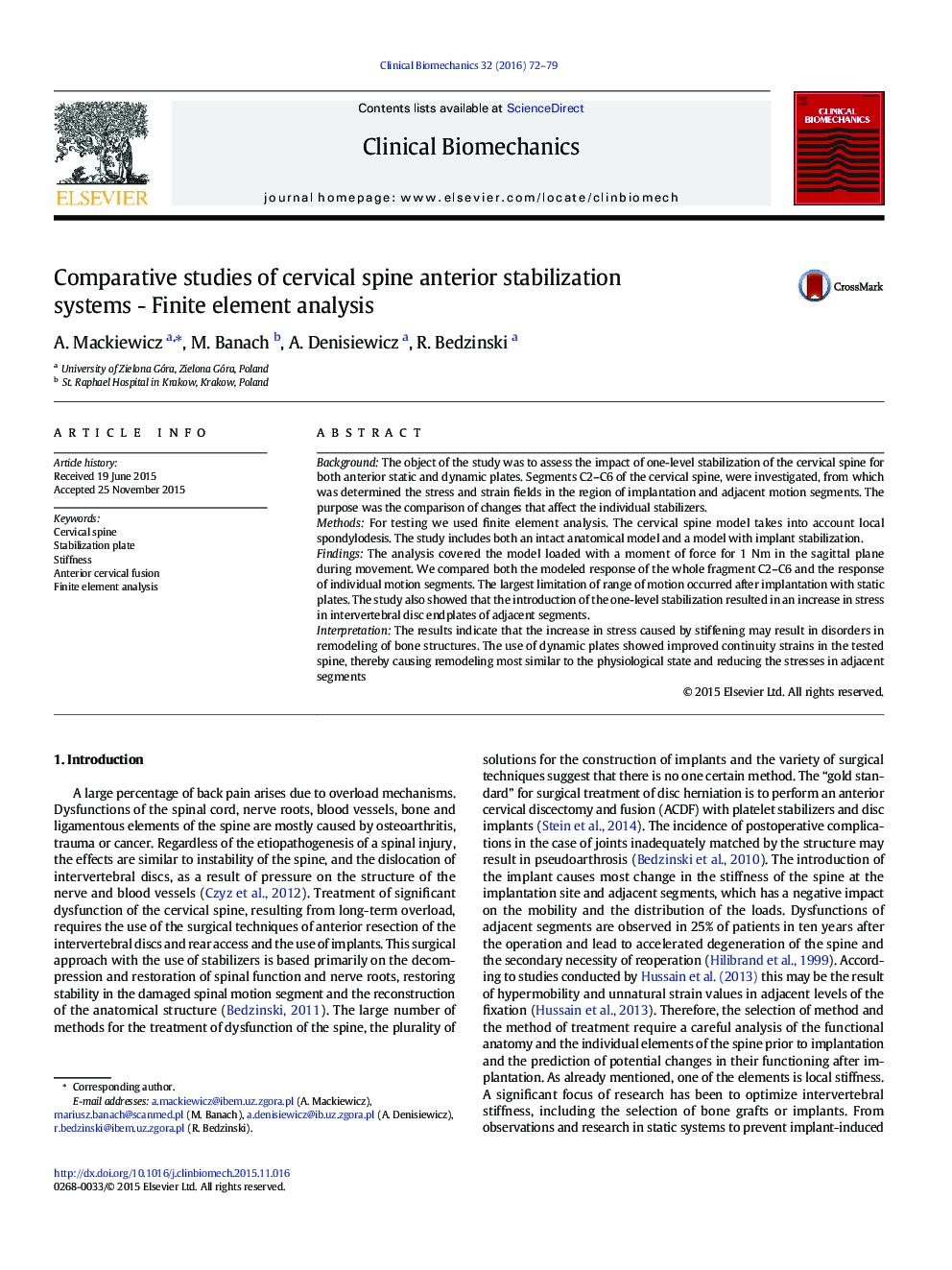| کد مقاله | کد نشریه | سال انتشار | مقاله انگلیسی | نسخه تمام متن |
|---|---|---|---|---|
| 6204602 | 1603746 | 2016 | 8 صفحه PDF | دانلود رایگان |
- Static plate implant increases stress in the endplate and reduces the range of motion.
- The use of dynamic plates reduces the stress of 30% of adjacent segments.
- The stress increase and mobility reduce causes instability in adjacent segments.
BackgroundThe object of the study was to assess the impact of one-level stabilization of the cervical spine for both anterior static and dynamic plates. Segments C2-C6 of the cervical spine, were investigated, from which was determined the stress and strain fields in the region of implantation and adjacent motion segments. The purpose was the comparison of changes that affect the individual stabilizers.MethodsFor testing we used finite element analysis. The cervical spine model takes into account local spondylodesis. The study includes both an intact anatomical model and a model with implant stabilization.FindingsThe analysis covered the model loaded with a moment of force for 1Â Nm in the sagittal plane during movement. We compared both the modeled response of the whole fragment C2-C6 and the response of individual motion segments. The largest limitation of range of motion occurred after implantation with static plates. The study also showed that the introduction of the one-level stabilization resulted in an increase in stress in intervertebral disc endplates of adjacent segments.InterpretationThe results indicate that the increase in stress caused by stiffening may result in disorders in remodeling of bone structures. The use of dynamic plates showed improved continuity strains in the tested spine, thereby causing remodeling most similar to the physiological state and reducing the stresses in adjacent segments
Journal: Clinical Biomechanics - Volume 32, February 2016, Pages 72-79
